13 min to read
10 Ways to Increase Your Profit Margin in 2023
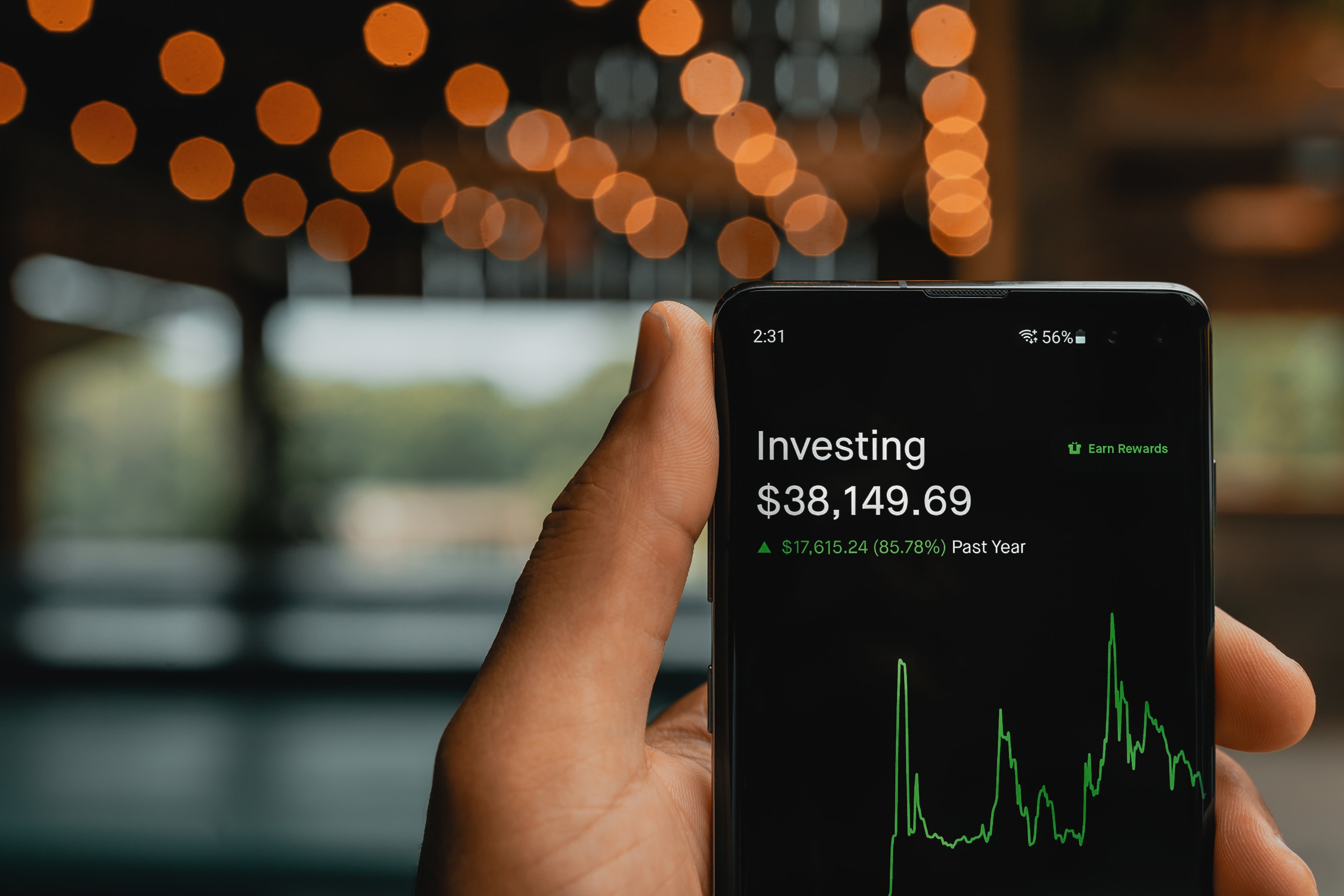
Profit Margin.
It's been two years since Covid turned our entire world upside down, and no, it isn't that we haven't gotten over it, but this event is crucial for what we'll discuss in this post.
Covid changed our way of living and consuming for an entire year, an era where deliveries and e-commerces were big saviors for many industries, but also a year with many uncertainties for the overall global economy.
After this stormy season, we faced the struggles of the pandemic with a 4.7% increase in inflation by 2021 and with supply problems, rising energy and food prices and the Russia-Ukraine, it is estimated that it reached 8.75% by the previous year 2022, informs Statista.
Nevertheless, inflation has two faces for America and Europe/Asia this year, one better than the other. While the latest Survey of Professional Forecasters projects a rapid slowdown of inflation from 5.9 percent in 2022 to 2.9 percent in 2023, even reaching a 2.3% decline by 2024, in Europe and China, people fear inflation as one of their biggest concerns for this year.
So, wherever you come from, it seems intuitive that if you have a business, you either want to take advantage of the situation or make the right decisions to keep a good profit margin for your business.
In theory, the formula is simple:
Profit Margin = Total Revenues - Total expenses
You can alter the outcome of this equation by doing three things:
- Increase the number of sales (Whenever possible, of course)
- Reduce costs (as long as it doesn't impact quality)
- Upsell or start charging your customers/clients more money to increase revenue (if the market allows it)
The tricky thing is that you risk throwing the whole equation off balance by trying to change one of these factors.
As any business manager knows, theory and practice are very different things, and small changes might take a lot of secondary implications in the business flow.
To manage this issue better, in this article, we'll discuss profit margin profoundly and give you the best ways to improve with digital marketing.
So, shall we begin? Let's get into it!
What are the types of Profit Margins?
Based on its formula, we can define profit margin as the difference between your business's sales revenue and the costs. It's a symbol of success for any company out there.
Now, there are three types of profit margins:
- Gross profit margin,
- Operating profit margin
- Net profit margin
Let's define what each of them represents.
Gross Profit Margin.
Also known as gross margin, this represents the difference between your company's total revenue and the cost of goods sold, divided by income. The percentage out of this figure will help you determine how much money is left over after your product's making and delivery.
The formula for gross profit margin is:
[(Total Revenue – Cost of Goods Sold) / Total Revenue] x 100
If the result is high, it indicates that you keep more money on each dollar of sales, which means that you're running profitable operations and your sales are good.
What is the operating profit margin?
This profit margin is similar to the one explained above with the difference that, as gross margins only factor in the cost of goods sold, the operating one considers a range of other operating expenses like rent, payroll and labor costs, insurance, advertising and utilities.
The operating profit margin formula is:
{[Total Revenue – (Cost of Goods Sold + Operating Costs)] / Total Revenue} x 100
With operating margins, you can get a more accurate picture of your actual pretax profit margin, and it helps you discover how operating expenses affect your bottom line.
What is the net profit margin?
This final margin deducts all your business' including the cost of goods sold, operating expenses and taxes and interest payments, from your total revenue to calculate your net income.
The formula for net profit margin is:
[(Total Revenue – Total Costs) / Total Revenue)] x 100
The net margin can give insights into how taces and debts affect your company's profitability.
What is a good profit margin?
A reasonable profit margin depends on your location, industry and particular circumstances.
For example, in a Shopify article, we found that banks had the highest profit margin with a 51.8%.
But in today's digital era, 48% of experts say online businesses have higher profit margins than brick-and-mortar stores.
For example, e commerces, the benchmark for a good profit margin can depend on whether you measure net or gross profits.
According to a Xero article, e-commerce's ideal profit margin can range between 50-70%. Nevertheless, NYU Stern School of Business reports an average of 41.54% for gross profit margins.
Regardless, we should remember that gross profits are based on the cost of goods sold before calculating other expenses like warehouse or shipping costs. So, measuring your profit's success by this margin may only reflect your company's financial health.
We found a better indicator as Shopify established that the average profit margin for e-commerce brands should be 10% net profit margin, while the high is 20% and the low is 5%.
It's important to acknowledge that net profit margins are lower than gross ones because net profit deducts operating systems from the total revenue. Because of this, net profit gives you the correct measurement to evaluate your business finances.
Since we learned the basics of profit margins, we can now go about how to grow your profit margin.
Let's get right into it!
1. Make all of your Decisions Data Driven
Thanks to advances in artificial intelligence and analytics platforms, we have at our mercy all the information about the performance of our channels and different media. For example, Google Analytics helps us see our website performance, while Instagram tools give us information about the engagement and success of each post. All this data will allow us to evaluate what is working and what isn't to enhance or eliminate the strategies according to their effectiveness.
Compare Your Website Performance and Your Marketing Plan Timeline
Make a list of all your marketing activities over the last year. Create a timeline and compare these dates against the performance metrics in Google Analytics.

Do you see any trends? Did one marketing push generate more traffic/conversions than another? Then use these data points to try and figure out why certain activities performed better than others.
Once you have done this, you need to ask yourself two questions:
- "Can I replicate and improve the top-performing campaigns in 2023?"
- "How can I avoid launching campaigns like the worst-performing ones of 2022?".
Analyze Your Website's, Audience Data
Were your users of the same demographic as your initial target audience? If they weren't, then you need to figure out why your marketing activities attracted the wrong people.
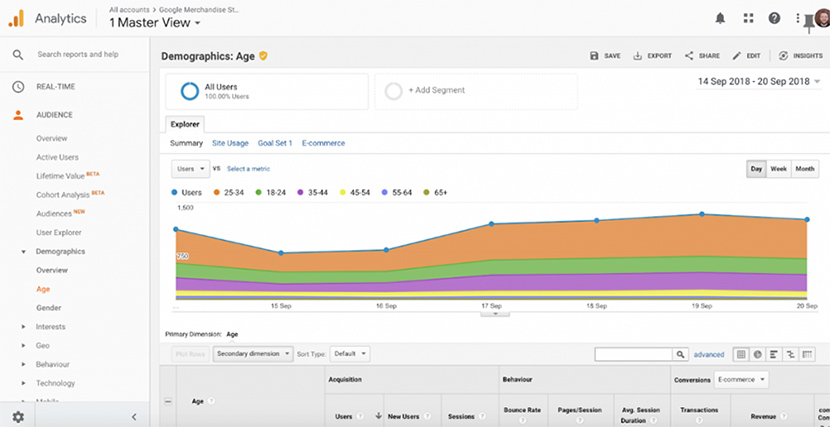
Once you have figured out why you can improve your targeting strategy, so your campaigns reach the correct people. You may also change your ads to appeal to your target personas. By doing this, you'll have a higher quality of traffic on your site, thus, a higher conversion rate.
Compare Your Website Performance by Channel
In this part, you'll see which of your channels is attracting the most qualified leads, and you can draw several important conclusions.
First, you can determine where your audience congregates the most and, therefore, identify which channels are most effective for your business to make the budget increases you consider necessary.
On the other hand, if you see that there are other channels where the leads are too few or failing that, there were none, you have two options.
If, after evaluating everything, you end up deducing that the lack of leads was due to ignorance of effective strategies for the platform or mismanagement, you can give it another chance and renew your content or ads strategy for this channel.
Now, the other deduction is that not all platforms work for all niches; therefore, no matter how hard you try, spending so much time on an ineffective channel will not give you any results.
Spending money on a pointless platform for your business is unnecessary; don't do it just because everyone is doing it; be wiser and stay in the right places.
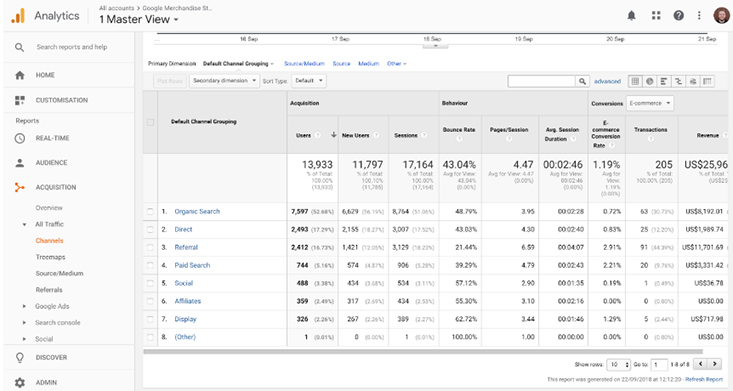
2. Increase Your Google Ads ROAS
ROAS = (revenue/advertising cost). It doesn't take an astrophysicist to understand that if you improve your ROAS, then you'll increase your profit margin.
Poor Targeting Strategy
Your ads are being viewed by the wrong people, causing a low conversion rate. Review your keywords to make sure they match what your target audience is actively searching for to get to your product or service.
Tip: add negative keywords, so your ads aren’t showing up where you don’t want them to.
Poor Conversion Funnel
The first thing you need to do is analyze your conversion funnel using Google Analytics.
Tip: Use a filter so you're looking at paid traffic only.
Is there a stage where there’s a significant drop-off in users? If so, then you need to fix the leak in order to increase your conversion rate.
The most effective way to improve the conversion funnel for paid traffic is to create a separate landing page for your PPC campaigns. These landing pages are more relevant to the ad and channel. For example, if the keyword is more oriented towards users in the research stage, you want a more informative landing page, which will create a need for your product/service.
Too Broad Remarketing Audiences
Remarketing campaigns allow you to get your ads back in front of users on your site. For effective remarketing campaigns, you must segment your audiences.
You need to create audiences in Google Analytics based on your customer data. A few examples are:
- Audiences by age group
- Users that abandoned the shopping cart
- Users that viewed blog content.
Each audience group requires personalized remarking.
You can do this by going to Admin > Property Settings > Audience Definitions > Audiences. Then you click on create new, add some rules and hey presto, you've created an audience.
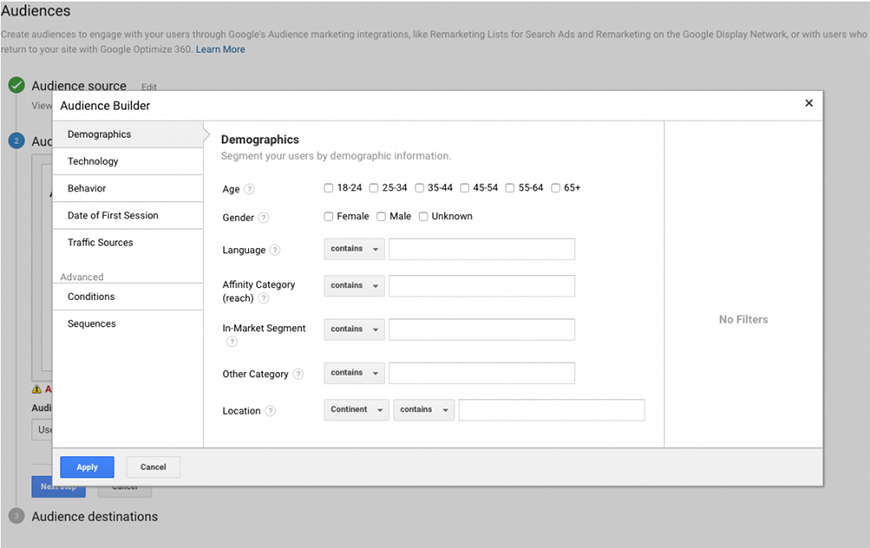
Today customers want to be treated as individuals, not just one of the many customers you may have. Your data allows you to solve those specific problems for your audience, giving them a better feeling about your brand. This is so crucial for businesses today as Google that 90% of marketers say personalization contributes to their business profitability. On the other side, 69% of customers appreciate this personalization, but only with data they explicitly shared with the business.
And as we're talking about profit margin, McKinsey informs that companies that use personalization earn 40% more money than their average competitors. Besides, the same medium has research in which personalization often results in a 10 to 15% increase in revenue, so the better your personalizations are, you'll get more extraordinary results economically.
If you want one more reason to start personalizing your campaigns, Liveclicker informs that companies that use advanced personalization see an ROI of $20 for every $1 invested.
3. Add Video Content to Your Conversion Funnel
Video marketing is still the king of content, so in 2022 82% of marketers planned to include video in their marketing strategies. Still, this percentage grew in 2023 to 93%. Consumers also prefer this content format, as 90% said that they "very much" or "somewhat" enjoy watching video content from brands online, leaving only a short amount of 4% for those who don't like it.
Animoto informs that video ads were the #1-way customers discovered a business they later purchased from.
So, no matter your goal, placing video strategically in your sales funnel can achieve diverse goals like increasing traffic to your website or even the time they spend on it. It means the time your video lasts.
So, let's find out how to use video in each stage.
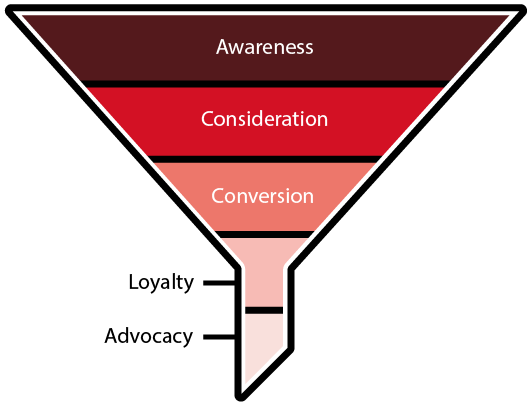
Top of the funnel
One idea for the top of the funnel is using educational content. You can use videos that discuss topics your users are searching for and place them in your blog. This will also help with SEO.
Try putting video content on your social media (we will cover this in the next part) and your PPC landing pages.
Middle of the funnel
At this stage, users are likely to be on the central part of your website. Here you can use explainer and company story videos to educate your users about your product and brand.
Bottom of the funnel
Your users will be on your product pages or about to make a business inquiry. You can target them with real customer experience videos to add authenticity to your brand and credibility to your products/services.
Again, this links back to data. You should test numerous videos to see what works best. You can do this by using Google Optimise.
4. Video Marketing for Social Media
By 2023, any business should ask if they should be on social media. Why? Because there are 4.74 billion users in these platforms, so if you aren't in yet, you are wasting a lot of potential.
Now, these social platforms are the place where video is becoming the highest growing trend, and in order to augment your chances to engage with them and so they become a new customer, you have to create entertaining and informing videos to convince them to choose you.
Among the most popular video content we have:
- Testimonial/User Generated Content.
- Demonstration Videos
- Tutorial/How-to videos
- Influencer or celebrity videos
- Videos telling the story behind your product,
- Videos showcasing your product,
- Videos featuring promos.
If you want the complete guide to maximizing your video marketing strategy, click on this article.
Adding to this section, let'slet's talk more about the different social media platforms.
- Duration: 2 to 5 minutes for engagement.
- Create playlists of videos: Make it easy for people to find similar videos.
- Add a featured video: You can pin a video to the top of your page to introduce your brand or highlight a new product.
- Upload videos directly to Facebook: Native videos give you analytics and better visibility in the feed.
- Make sure you have a call to action: Give them something to do after they watch (or during) the video with an on-screen CTA.
- Duration: Similar to TikTok, video reels or videos should be shorter as people rapidly scroll through their feeds. You lose if your videos don'tdon't grab their attention in the first seconds. 1 to 3 minutes is fine.
- Reduce words: Don'tDon't make people read too much. Instagram is a visual medium.
- Think in variations on your theme: People tend to find and stick with a theme. Instagram accounts often have an overall look and feel, then keep repeating their theme in new ways.
- Keep it simple: Don't get overly complicated, but keep the execution beautiful. People look to Instagram for simplicity and a breath of fresh air. Give highlights, not all the instructions.
- Maintain focus: Be single-minded on one idea for your video.
Video marketing stats:
-
According to
Instagram, 58% of users became more interested in a brand or product after watching stories. - 50% of users visited a business website after seeing a story.
- Animoto informs that 1 in 4 consumers purchased after watching a story on Instagram.
Linkedin:
- Duration: Similar to Facebook, the ideal length for video engagement should be between 2 to 5 minutes.
- Create educational or informative content: Since this is the number 1 b2b platform, users find more interest in videos that give fascinating insights about your niche.
Video marketing stats:
-
Users of this platform are
20x more likely to share a video than any other content. -
LinkedIn's content is usually designed for silent viewing as it improves your chances
of getting watched through the end by 70%.
YouTube:
- Duration: Any length you want, as this platform is 100% video-consuming.
- Use SEO: Unlike other platforms, YouTube can work as a search engine, and because of this, making good use of keywords is crucial for the target audiences to find you.
- Diversify your content: Make a list of content ideas to keep people engaged with your content.
Video marketing stats:
- Animoto says that Youtube is the #1 purchase driver on social.
-
According to
Google, when shopping or browsing on YouTube, they feel like they can decide to purchase or not purchase faster. - 40% of global shoppers admit to buying products they discovered on YouTube.
5. Outsource Your Digital Marketing
Digital marketing is a very technical field that can be quite costly in-house. One way you can bring down your fixed costs is to outsource.
It is hard to put an exact figure on how much you'll save but according to Forbes, outsourcing an entire team costs the same as one in-house marketer's yearly wages.
Another reason to outsource digital marketing is time. You can go from having zero marketers that are specialized in digital to having a whole team of specialists within one week. You don’t have to train anybody. It’s great!
We want to reiterate that you’ll have a team of specialists in their respective fields. This means optimized campaigns to get maximum return on the money you spend… it’s the winning formula to increase your profit margin!
6. Nearshoring: Why Not Take Outsourcing One Step Further?
You can take saving money through outsourcing one step further by nearshoring your digital marketing to companies based in countries with a more competitive price. This will further decrease your costs, thus increasing your profit margin.

Take Portugal, for example. There are plenty of big-name businesses investing here. Accenture, Altran, Cisco, Microsoft, Nokia Siemens, SA, Google... the list goes on.
But why have these companies chosen to invest in Portugal?
Well, that's easy because Portugal has…
- Western European ethics in business, law, and culture
- Competitive cost structure
- Continued political & social stability and security
- Good quality of education and language skills
- Advanced technological & business infrastructures
Nearshoring is a lot more viable option for small and medium-sized companies that want to increase their online conversions but want to keep their costs down.
7. Referrals - Focus More on Word of Mouth!
Word of mouth is still valuable for any business today, and using referrals will bring you more fantastic results for your profit margin.
With a referral program, you can build brand awareness and take your business to people interested in your company's area. By offering some benefits, you encourage customers to invite their friends to your business, reaching a wider audience at a low cost.
A LinkedIn article says that brands with referral marketing programs reported a 71% higher conversion rate, customers with nearly a 60% higher lifetime value and around a 70% faster rate at which referred leads convert into happy customers.
When your customers recommend your services to their friends and family, it augments your chances to reach qualified leads, and if their experience is good enough, it gives you more chances for them to convert.

Referral Program.
8. Increase your Average Order Value (AOV)
If you have an e-commerce platform, this tip is an excellent option. This term refers to the average dollar a customer spends per transaction in your store. The formula for AOV is:
Total revenue/number of orders = average order value.
You can add product recommendations to product and checkout pages to make this work. So when you recommend popular products, you can increase your average order value while also shifting from low-margin sales to high ones.
Then, you can use the cross-selling technique, which consists of recommending other items that add to the product's experience. For example, you can cross-sell lenses, tripods, and other photography tools if you sell cameras.
9. Raise your prices.
We put this at last, not for you to see it as a last resort, but to watch it as a necessary change for a new year.
While many business owners fear raising prices because they think it could scare their customers, this could be an oxygen dose for your business.
According to Shopify, raising an item's product by 10% could increase your profit margin by 50%, and if the product is in demand, it will sell as well. Even if some customers abandon, your earnings will still be stable, so it's an excellent time for you to put more value on what you sell.

About Bruno GavinoBruno Gavino is the CEO and partner of Codedesign, a digital marketing agency with a strong international presence. Based in Lisbon, Portugal, with offices in Boston, Singapore, and Manchester (UK) Codedesign has been recognized as one of the top interactive agencies and eCommerce agencies. Awarded Top B2B Company in Europe and Top B2C company in retail, Codedesign aims to foster personal relationships with clients and create a positive work environment for its team. He emphasizes the need for digital agencies to focus on data optimization and performance to meet the increasingly results-driven demands of clients. His experience in digital marketing, combined with a unique background that includes engineering and data, contributes to his effective and multifaceted leadership style. |

About CodedesignCodedesign is a digital marketing agency with a strong multicultural and international presence, offering expert services in digital marketing. Our digital agency in Lisbon, Boston, and Manchester enables us to provide market-ready strategies that suit a wide range of clients across the globe (both B2B and B2C). We specialize in creating impactful online experiences, focusing on making your digital presence strong and efficient. Our approach is straightforward and effective, ensuring that every client receives a personalized service that truly meets their needs. Our digital agency is committed to using the latest data and technology to help your business stand out. Whether you're looking to increase your online visibility, connect better with your audience, get more leads, or grow your online sales. For more information, read our Digital Strategy Blog or to start your journey with us, please feel free to contact us. |
CodeDesign is leading:
- Digital Agency
- Digital Marketing Agency
- Digital Ecommerce Agency
- Amazon Marketing Agency
Feel free to contact us to see the unprecedented growth of your business.



Add comment ×